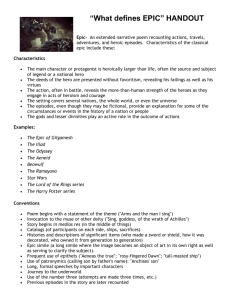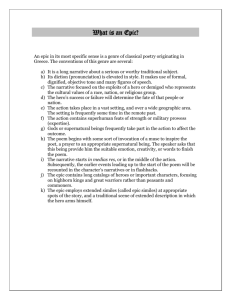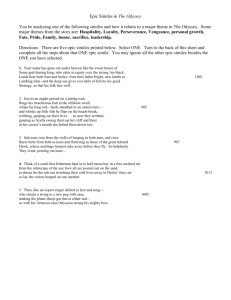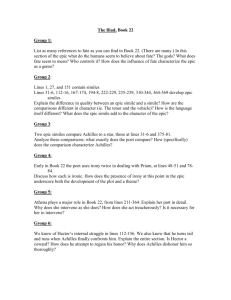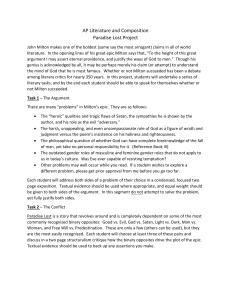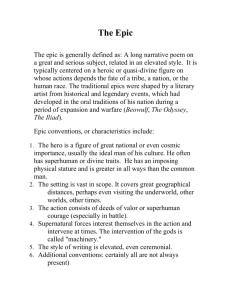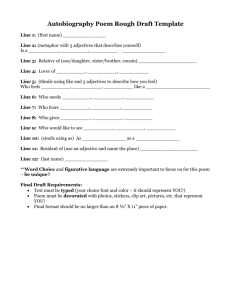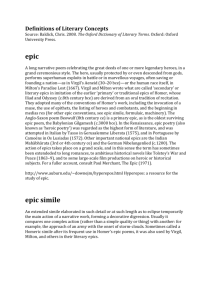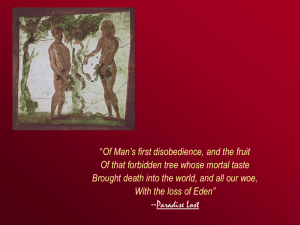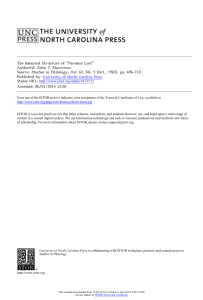The Epic simile in Paradise Lost
advertisement
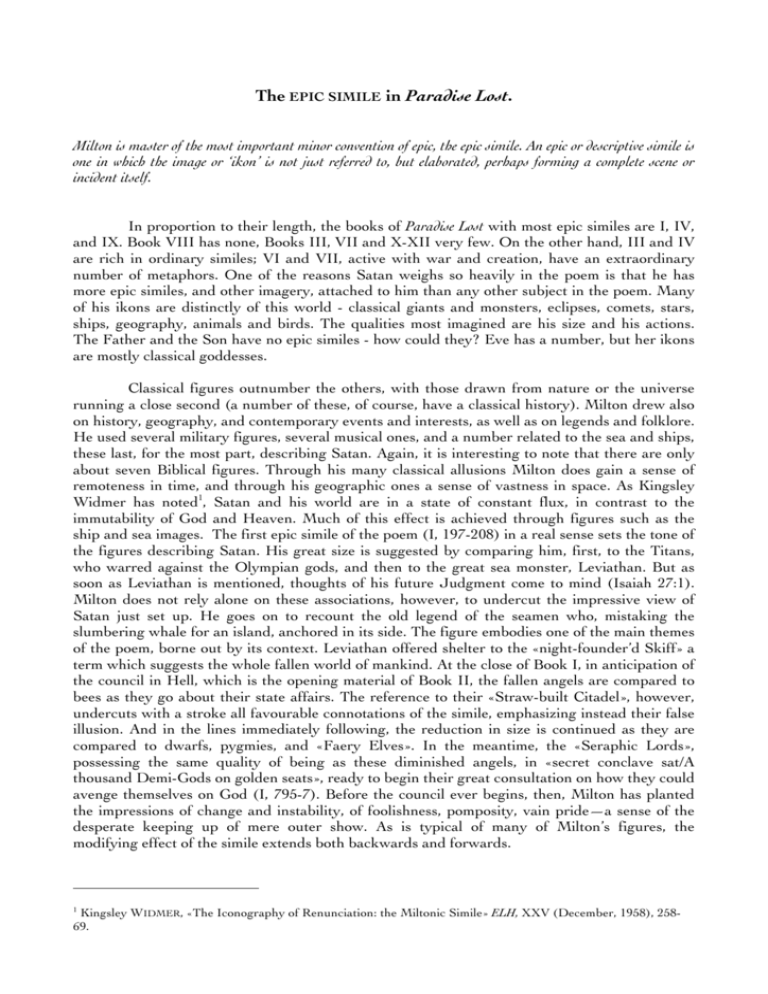
The EPIC SIMILE in Paradise Lost. Milton is master of the most important minor convention of epic, the epic simile. An epic or descriptive simile is one in which the image or ‘ikon’ is not just referred to, but elaborated, perhaps forming a complete scene or incident itself. In proportion to their length, the books of Paradise Lost with most epic similes are I, IV, and IX. Book VIII has none, Books III, VII and X-XII very few. On the other hand, III and IV are rich in ordinary similes; VI and VII, active with war and creation, have an extraordinary number of metaphors. One of the reasons Satan weighs so heavily in the poem is that he has more epic similes, and other imagery, attached to him than any other subject in the poem. Many of his ikons are distinctly of this world - classical giants and monsters, eclipses, comets, stars, ships, geography, animals and birds. The qualities most imagined are his size and his actions. The Father and the Son have no epic similes - how could they? Eve has a number, but her ikons are mostly classical goddesses. Classical figures outnumber the others, with those drawn from nature or the universe running a close second (a number of these, of course, have a classical history). Milton drew also on history, geography, and contemporary events and interests, as well as on legends and folklore. He used several military figures, several musical ones, and a number related to the sea and ships, these last, for the most part, describing Satan. Again, it is interesting to note that there are only about seven Biblical figures. Through his many classical allusions Milton does gain a sense of remoteness in time, and through his geographic ones a sense of vastness in space. As Kingsley Widmer has noted1, Satan and his world are in a state of constant flux, in contrast to the immutability of God and Heaven. Much of this effect is achieved through figures such as the ship and sea images. The first epic simile of the poem (I, 197-208) in a real sense sets the tone of the figures describing Satan. His great size is suggested by comparing him, first, to the Titans, who warred against the Olympian gods, and then to the great sea monster, Leviathan. But as soon as Leviathan is mentioned, thoughts of his future Judgment come to mind (Isaiah 27:1). Milton does not rely alone on these associations, however, to undercut the impressive view of Satan just set up. He goes on to recount the old legend of the seamen who, mistaking the slumbering whale for an island, anchored in its side. The figure embodies one of the main themes of the poem, borne out by its context. Leviathan offered shelter to the «night-founder’d Skiff» a term which suggests the whole fallen world of mankind. At the close of Book I, in anticipation of the council in Hell, which is the opening material of Book II, the fallen angels are compared to bees as they go about their state affairs. The reference to their «Straw-built Citadel», however, undercuts with a stroke all favourable connotations of the simile, emphasizing instead their false illusion. And in the lines immediately following, the reduction in size is continued as they are compared to dwarfs, pygmies, and «Faery Elves». In the meantime, the «Seraphic Lords», possessing the same quality of being as these diminished angels, in «secret conclave sat/A thousand Demi-Gods on golden seats», ready to begin their great consultation on how they could avenge themselves on God (I, 795-7). Before the council ever begins, then, Milton has planted the impressions of change and instability, of foolishness, pomposity, vain pride—a sense of the desperate keeping up of mere outer show. As is typical of many of Milton’s figures, the modifying effect of the simile extends both backwards and forwards. 1 Kingsley WIDMER, «The Iconography of Renunciation: the Miltonic Simile» ELH, XXV (December, 1958), 25869.
